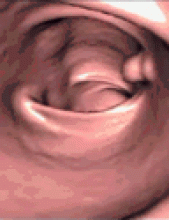Palimar is a sleepy hamlet tucked deep in the hinterland of west-coastal India. A single mud track leads to this place; a once-a-day bus, and an occasional radio, provide the only connection with the outside world. This is where I found myself, at a whim, in 1971 when I was forced by circumstance to interrupt my second year of medical studies. A friend, a drawing master in the village school, provided spartan lodging. Board was at the simple tile-roofed house of the local headmaster a few miles off. The villagers treated me with a deference no doubt inspired by the fact that I was a medic, even if a half-baked one.

Figure. Photo by: Fred Sebastian
I whiled away the time, taking treks into the shrub jungles that nestled Palimar. The headmaster's wife, a motherly lady, plied me with endless mounds of fluffy rice and spicy soup. At supper's end, the headmaster would call out, Annadurai ide balle, eela Gowri Thomas, eela ba — Come on over Annadurai, you too, Gowri Thomas — and two very mean-looking cats would respond. Named after politicians of the day, they would polish off what little remained as scraps on the banana-leaf plates.
My interlude from study was one day interrupted rudely by a gaggle of agitated voices and some frantic knocks.
“Headmaster's daughter is having labour pains, and he wants you quickly.”
Now this was calamity compounded. I neither had the knowledge nor the wherewithal to attend obstetric situations. My aversion to blood and emergencies had already made me a misfit at the medical college. Gulping hard, I hurried along with the group, walking in the dark with a lantern in one hand and a stick in the other. The latter was a must in those parts. Doom beckoned the unwary who might get bitten by a cobra, but woe also befell anyone naive enough to club that cobra to death. The rural folk revered snakes, and any snake-killer was enjoined to feed a few Brahmans and arrange for a serpent funeral as atonement.
Soon we were in the headmaster's dimly lit house. In the tiny anteroom, writhing on a straw mat on the floor, lay the labouring woman. She was barely seventeen and looked very frightened. She winced with pain every time a contraction ripped through her fragile frame. I saw in the glow of the kerosene lamp her worried father and hand-wringing mother. Beside them was another matronly woman, in a white sari. Podike thaye maga? Yaan ulley atha, iththe daaktarla battheru, nanna yaarla bodiicchi? — Why panic son, I am here now, and now we have the doctor too, who else do we need? The lingo was Tulu, an ancient Dravidian dialect (and, for the curious, the mother tongue of actress Aishwarya Rai). The term maga — son — is used beyond gender for daughters, too, as a form of endearment.
I heaved a silent sigh. Thank heaven for small mercies. She looked like a midwife, a native nursemaid. I perceived that she read my face and saw panic written on it in capital letters. She bade all to leave us alone and sat down beside the mother-to-be, who now lay still in the lull between contractions. She took the chimney lamp from the chair it was on and, placing it close, rummaged in her cloth bag to ferret out a small glass bottle. Stuffing a wad of betel leaves into her mouth, she uncapped the vial and gingerly poured a few drops of viscid, oily dark fluid into the patient's navel. Chewing her cud vigorously, she peered to see which way the overflow trickled.
Nanna porthundu, amasara ijji —There is time, no need to hurry. This exercise was repeated a few times, with the same verdict: No urgency. Suddenly she was all agog. Daaktrey ready-na, shuru aandu — Ready doctor, it has begun. She muttered gentle words of comfort, and egged on the mother to be. Nanna onji chooru maga — Just a little more, son. Presently, amid the groans and grimaces, I heard a kitten-like cry.
A baby girl. A perfectly healthy neonate. A host of new lamps were lit, a Petromax lantern suddenly coughed into life, the family was in ecstasy. Neighbours converged, laughter and bonhomie pervaded. I helped the midwife deliver the placenta and snipped the cord that bound baby to mother. From now on the bond between them would be invisible, but of a higher plane. The baby's cry had Annadurai and Gowri on alert too. Their tails swished to and fro in slow motion. There was a banana-leaf plate with a home jaggery-based specialty and a steel mug of Horlicks for me. Discretely, a folded twenty-rupee note was pressed into the palm of the nurseamma, who grinned, her betel-stained incisors aglint. Many pats on my back, and many rounds of Thanks Daaktarey later, I headed back. The new father walked with me, insisting on holding my stick in one hand and my lantern in the other: his humble, rural way of expressing gratitude.
I wonder how or why the trickle direction meant so much to the unlettered village nurse. Is it that when the overflow direction is toward the toes, the uterus is still undescended, and when suddenly the flow direction is reversed, the organ level has dipped? Could this woman have determined the onset of the second stage through this simple method? Or was I just a witness to a superstitious ritual? I am uncertain still. I am certain though, that there is more lore and logic in an indigenous barefoot doctor's armamentarium than I have seen in the tomes of modern medicine. In both demonstrating and inspiring raw confidence, few modern doctors can hold a candle to the talents of the unschooled indigenous dais of subcontinental Asia.











